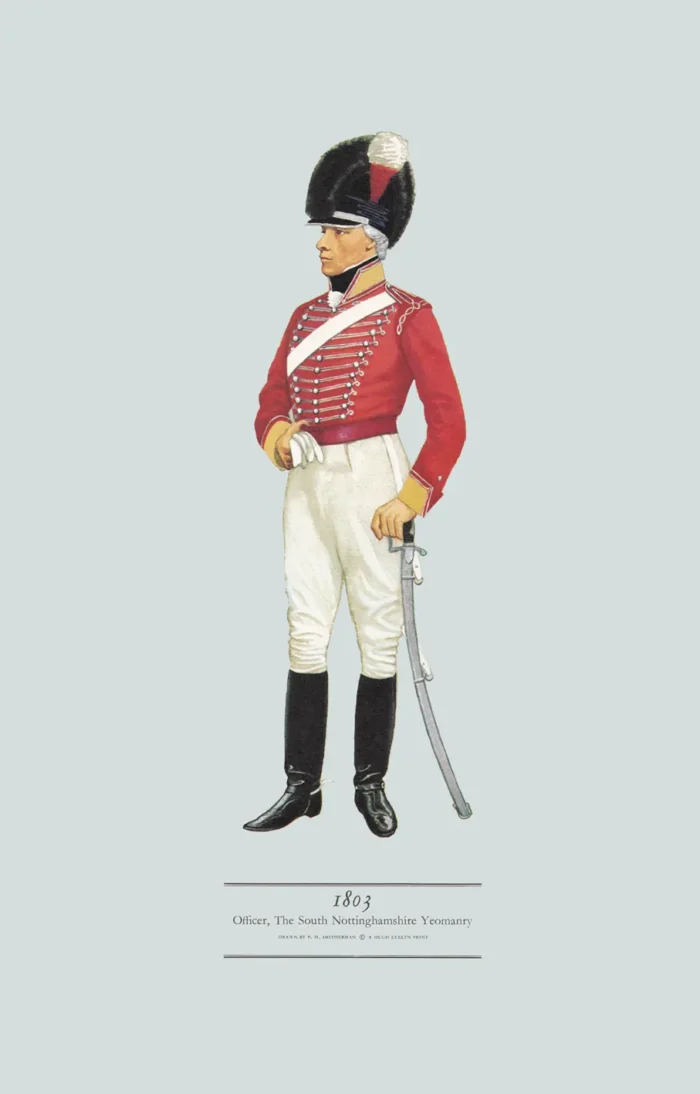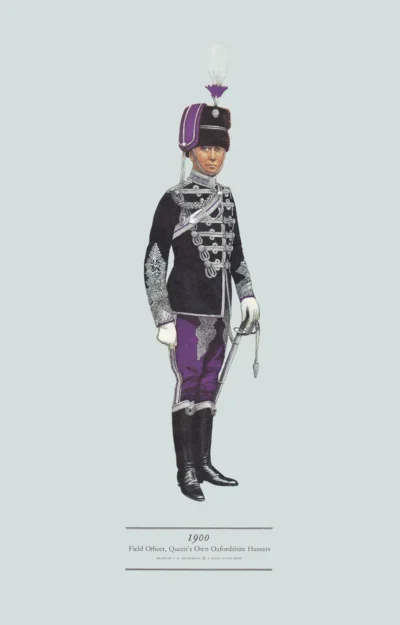Officer, South Nottinghamshire Yeomanry, 1803
£15.00
South Nottinghamshire Yeomanry (1794); disbanded 2014 (scroll down for a more detailed Description)
Published 1967 by © Hugh Evelyn Limited; drawn by Colonel Philip Henry Smitherman (1910-1982), Royal Corps of Signals
Size: c. 24.5 x 37.5cm [9 ½ ″ x 14 ½ ″] (may vary slightly from printers’ cut 50 years ago)
Printed on on medium cardstock weighing 144 g/sm2 faced in light greyish blue (RGB c. d5dede)
Print is STANDARD size – shipping is the same for 1 to 10 prints (based on largest print size in your order) – see Shipping & Returns
In stock
Description
Part of the 307th Regiment, Royal Artillery (‘RA’) started life as the South Nottinghamshire Yeomanry, raised during the general emergency of the French Revolutionary Wars in 1794/5. It became the Southern Nottinghamshire Regiment of Yeomanry Cavalry in 1826 and then 12th (South Nottingham) Company of the 3rd Battalion in 1900 in response to the Boer War. The 1st South Nottinghamshire Hussars became part of the new Territorial Army in 1908 and in 1922 converted to artillery as 107th (South Notts Hussars Yeomanry) Brigade, RFA. Finally it was merged in 1947 to become 307th (RHA) (South Nottinghamshire Hussars Yeomanry) Field Regiment, RA which, as a battery, formed part of 100th (Yeomanry) Regiment Royal Artillery but disbanded in March 2014. This Officer is wearing light cavalry uniform of a quite usual type, a coatee without tails, a leather helmet, and the sword hung from a waist-belt. It is a handsome practical dress. His sword is the British light cavalry sabre, the best weapon of its kind produced by Britain which was widely feared on the continent.
Source: Item of uniform in possession of the regiment (in 1967).
Additional information
| Weight | 0.012 kg |
|---|---|
| Dimensions | 24 × 37 cm |





